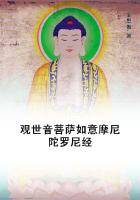As the province was almost surrounded by water and was covered with a network of creeks and channels, nearly all the villages and towns were situated on tidewater streams, and the dugout canoe, modified and improved, was for several generations the principal means of communication.Most of the old roads in New Jersey followed Indian trails.There was a trail, for example, from the modern Camden opposite Philadelphia, following up Cooper's Creek past Berlin, then called Long-a-coming, crossing the watershed, and then following Great Egg Harbor River to the seashore.Another trail, long used by the settlers, led from Salem up to Camden, Burlington, and Trenton, going round the heads of streams.It was afterwards abandoned for the shorter route obtained by bridging the streams nearer their mouths.This old trail also extended from the neighborhood of Trenton to Perth Amboy near the mouth of the Hudson, and thus, by supplementing the lower routes, made a trail nearly the whole length of the province.
As a Quaker refuge, West Jersey never attained the success of Pennsylvania.The political disturbances and the continually threatened loss of self-government in both the Jerseys were a serious deterrent to Quakers who, above all else, prized rights which they found far better secured in Pennsylvania.In 1702, when the two Jerseys were united into one colony under a government appointed by the Crown, those rights were more restricted than ever and all hopes of West Jersey becoming a colony under complete Quaker control were shattered.Under Governor Cornbury, the English law was adopted and enforced, and the Quakers were disqualified from testifying in court unless they took an oath and were prohibited from serving on juries or holding any office of trust.Cornbury's judges wore scarlet robes, powdered wigs, cocked hats, gold lace, and side arms; they were conducted to the courthouse by the sheriff's cavalcade and opened court with great parade and ceremony.Such a spectacle of pomp was sufficient to divert the flow of Quaker immigrants to Pennsylvania, where the government was entirely in Quaker hands and where plain and serious ways gave promise of enduring and unmolested prosperity.
The Quakers had altogether thirty meeting houses in West Jersey and eleven in East Jersey, which probably shows about the proportion of Quaker influence in the two Jerseys.Many of them have since disappeared; some of the early buildings, to judge from the pictures, were of wood and not particularly pleasing in appearance.They were makeshifts, usually intended to be replaced by better buildings.Some substantial brick buildings of excellent architecture have survived, and their plainness and simplicity, combined with excellent proportions and thorough construction, are clearly indicative of Quaker character.There is a particularly interesting one in Salem with a magnificent old oak beside it, another in the village of Greenwich on the Cohansey farther south, and another at Crosswicks near Trenton.
In West Jersey near Mount Holly was born and lived John Woolman, a Quaker who became eminent throughout the English speaking world for the simplicity and loftiness of his religious thought as well as for his admirable style of expression.His "Journal," once greatly and even extravagantly admired, still finds readers."Get the writings of John Woolman by heart," said Charles Lamb, "and love the early Quakers." He was among the Quakers one of the first and perhaps the first really earnest advocate of the abolition of slavery.The scenes of West Jersey and the writings of Woolman seem to belong together.Possibly a feeling for the simplicity of those scenes and their life led Walt Whitman, who grew up on Long Island under Quaker influence, to spend his last years at Camden, in West Jersey.His profound democracy, which was very Quaker-like, was more at home there perhaps than anywhere else.















